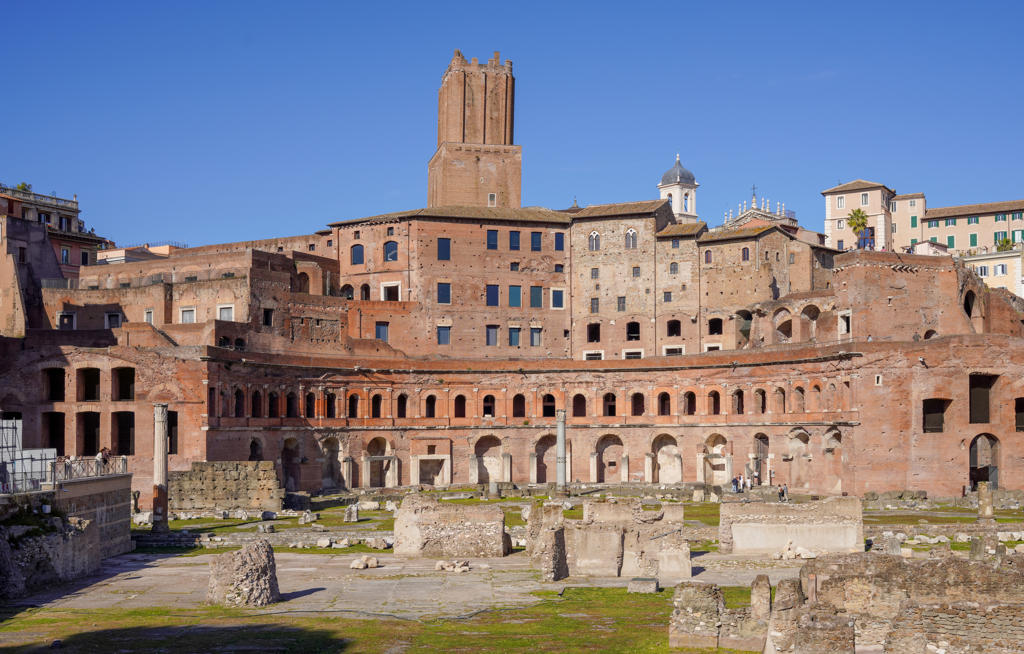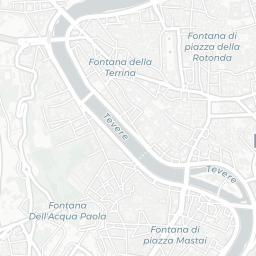About Mercati di Traiano
The ancient complex of Trajan's Markets unfolds as a marvel of Roman engineering and urban planning. Built into the slopes of the Quirinal Hill, this multi-level structure once served as a bustling hub of commerce and administration. The semi-circular façade, with its series of brick arches and windows, creates a striking visual rhythm, while the remnants of shops and offices hint at the vibrant activity that once filled these spaces. The Great Hall, with its high vaulted ceilings, stands as a testament to the architectural ingenuity of the Romans, designed to accommodate both light and air in a bustling marketplace.
Constructed under the reign of Emperor Trajan in the early 2nd century AD, the markets were part of a larger complex that included Trajan's Forum. This was a time when Rome was at the height of its imperial power, and the markets symbolized the wealth and sophistication of the empire. The complex was not merely a place for trade but also a center for social interaction and governance, reflecting the multifaceted nature of Roman urban life. The use of concrete and brick in its construction was innovative for its time, allowing for the creation of large, open spaces that were both functional and aesthetically pleasing.
Right Where It Began
Trajan's Markets were strategically located to serve as the commercial heart of ancient Rome. The complex was ingeniously integrated into the existing topography, utilizing the natural slope of the Quirinal Hill to create multiple levels of shops and administrative offices. This design not only maximized space but also facilitated the flow of goods and people, making it a vital part of the city's infrastructure. The markets were a place where merchants from across the empire would gather, bringing with them goods from distant lands, thus playing a crucial role in the economic life of Rome.
Plan your perfect trip to Rome with Travo! Download now and start exploring.
Marks of Time
The enduring structures of Trajan's Markets bear the marks of time, with their weathered bricks and stones telling stories of centuries past. The complex has survived numerous transformations, from its original use as a marketplace to its later adaptation as a fortress in the medieval period. Despite these changes, the architectural integrity of the markets remains largely intact, offering a glimpse into the grandeur of ancient Rome. The preservation of these structures is a testament to the durability of Roman engineering and the historical significance of the site.
Stories in Stone
The intricate details of the market's construction reveal much about Roman society and its values. The use of arches and vaults not only provided structural support but also symbolized the Roman mastery of architectural techniques. The layout of the shops, with their standardized sizes and uniform façades, reflects the organized nature of Roman commerce. Each stone and brick in the complex is a piece of a larger narrative, illustrating the daily lives of the people who once thrived in this vibrant urban center.
Details That Speak
Close examination of the market's features reveals fascinating details that speak to the ingenuity of its design. The Great Hall, with its impressive height and open space, was likely used for public gatherings and official functions, showcasing the dual purpose of the complex as both a commercial and civic center. The remnants of staircases and corridors suggest a well-planned circulation system, allowing for efficient movement throughout the multi-level structure. These details highlight the advanced level of planning and execution that characterized Roman architecture.
Living History
Today, Trajan's Markets serve as a living museum, offering visitors a chance to step back in time and experience the grandeur of ancient Rome. The site is not only an archaeological treasure but also a cultural landmark, hosting exhibitions and events that celebrate Rome's rich history. As visitors walk through the ancient corridors and stand in the shadow of the Great Hall, they are reminded of the enduring legacy of the Roman Empire and its impact on the modern world. The markets continue to be a place of learning and exploration, bridging the past and present in a city that has always been at the heart of history.

Location
Via Biberatica, 00187, Rome



